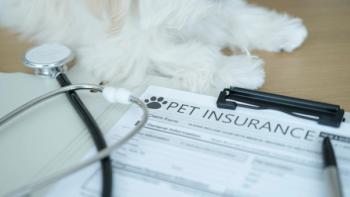
Where does your facility generate revenue?
Are you making the most of your practice space? Find out by breaking down your earnings by square foot and comparing your numbers with these averages for each profit center.
Facility costs are the third-largest expense for most hospitals. Only staffing costs and drug and medical supply expenses rank higher. Of course, your facility also plays a major role in revenue generation. "The building acts as a working asset," says Veterinary Economics Editorial Advisory Board member Gary Glassman, CPA.
When you look at industry averages, two full-time, small animal practitioners should generate approximately $940,000 of gross revenue out of an average of 2,500 square feet, says Glassman. When you look at these numbers by profit center, about 35 percent of your building space will be allocated to overhead and is not direct income-production space. "You need these areas—including offices, bathrooms, an employee lounge, and most of your reception area—to manage the business functions of the practice," says Glassman, a partner with Burzenski & Co. PC in East Haven, Conn.
Below you can see a breakdown of the revenue-generating areas of a practice supporting two full-time doctors that gives annual revenue per square foot. As you can see, the most profitable profit centers based on use of space are the pharmacy, clinical services, and dental services, while the least profitable are boarding, hospitalization/treatments and radiology/ultrasound services.
Interestingly, as a hospital grows in volume, there are some services that can become more efficient in terms of revenue when you look at the space they use, Glassman says. For example, radiology/ultrasound, surgery, and hospitalization/treatments, may be underutilized in a smaller practice. As the client volume grows, you may not need any more space for these services, and yet the revenue could grow dramatically. In contrast, Glassman says, it's harder to make an area like clinical services more profitable per square foot, because an increase in client volume will demand more exam rooms and thus more space.
Quick fact
So use your space wisely. What you're not using—or not using wisely—is more than wasted space. It's wasted potential.
Make the best use of your space
Practitioners often lament not having enough storage space in their facilities. But when we asked 100 practitioners how they would use an extra 200 square feet, the No. 1 answer was for an exam room, according to the 2005 Well-Managed Practice Study by Wutchiett Tumblin and Associates and
Veterinary Economics
. This emphatic response doesn't surprise architect Dan Chapel, AIA, a
Veterinary Economics
Editorial Advisory Board member, in the least.
"Veterinarians want to add space that will enhance client services and therefore make more money, and for most of them, that's an exam room," says Chapel, principal of Chapel Associates Architects in Little Rock, Ark. "As much as they want and need more storage, or even increased treatment space, most doctors will invest in the room that generates the most revenue and is essential to clients' perceptions of the practice."
Chapel points out that adding another exam room also helps alleviate crowding and congestion in the waiting area, which increases client satisfaction. "A great rule of thumb is to have two exam rooms for every doctor who works the exam rooms," says Chapel. "AAHA recommends exam rooms that are 80 square feet; I prefer more like 100 square feet to give you ample room."
Another 10 percent of respondents say they'd use the 200 square feet for a comfort room—which, Chapel says, is really a larger room that you can use for exams in a pinch. (See Figure 1 for more.)
Figure 1 : Making use of 200 square feet
Your colleagues are pretty serious about adding these elements to their practices; a Veterinary Economics Issue Feedback Report, conducted in June 2004, found that 24 percent of respondents plan to remodel their facility and 23 percent plan to build a new facility in the next five years.
Corroborating evidence: The 2005 Well-Managed Practice Study found that 13 percent of respondents plan to remodel their current facility in the next two years, and they expect to spend an average of $316,000. Another 14 percent of doctors plan to expand their current facility, spending an average of $841,667. And 8 percent plan to build a brand-new facility at an average cost of $1,324,556.
Newsletter
From exam room tips to practice management insights, get trusted veterinary news delivered straight to your inbox—subscribe to dvm360.






